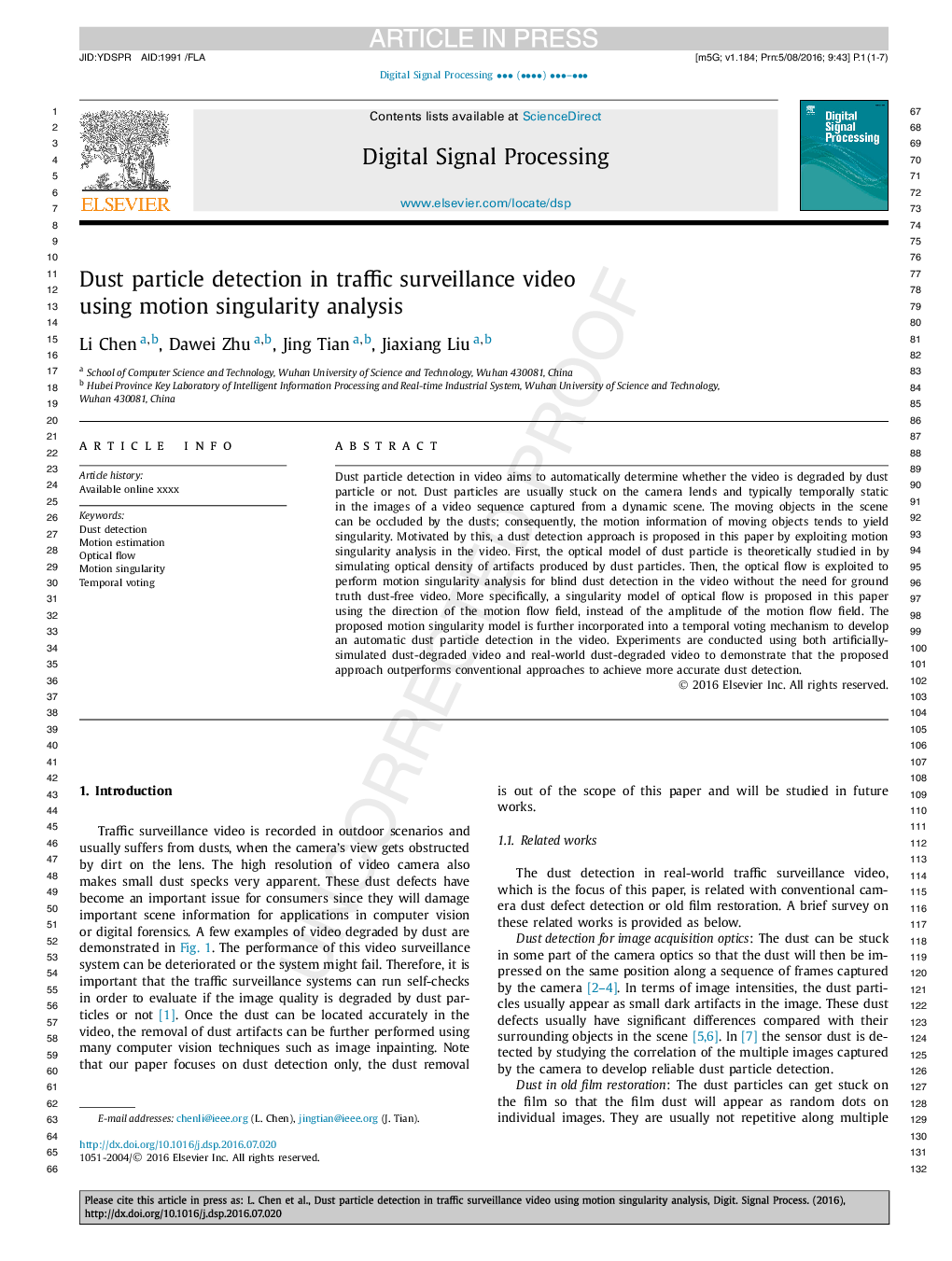| Article ID | Journal | Published Year | Pages | File Type |
|---|---|---|---|---|
| 6951927 | Digital Signal Processing | 2016 | 7 Pages |
Abstract
Dust particle detection in video aims to automatically determine whether the video is degraded by dust particle or not. Dust particles are usually stuck on the camera lends and typically temporally static in the images of a video sequence captured from a dynamic scene. The moving objects in the scene can be occluded by the dusts; consequently, the motion information of moving objects tends to yield singularity. Motivated by this, a dust detection approach is proposed in this paper by exploiting motion singularity analysis in the video. First, the optical model of dust particle is theoretically studied in by simulating optical density of artifacts produced by dust particles. Then, the optical flow is exploited to perform motion singularity analysis for blind dust detection in the video without the need for ground truth dust-free video. More specifically, a singularity model of optical flow is proposed in this paper using the direction of the motion flow field, instead of the amplitude of the motion flow field. The proposed motion singularity model is further incorporated into a temporal voting mechanism to develop an automatic dust particle detection in the video. Experiments are conducted using both artificially-simulated dust-degraded video and real-world dust-degraded video to demonstrate that the proposed approach outperforms conventional approaches to achieve more accurate dust detection.
Related Topics
Physical Sciences and Engineering
Computer Science
Signal Processing
Authors
Li Chen, Dawei Zhu, Jing Tian, Jiaxiang Liu,
